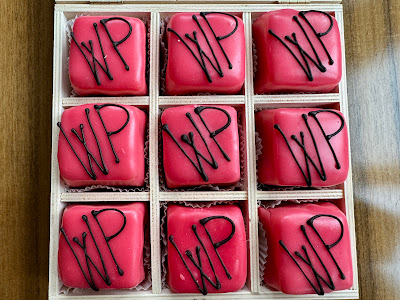Firenze, Italy 4
After the lovely breakfast we visited the Bargello National Museum in the Palazzo del Bargello, one of the oldest buildings in Florence that dates back to 1255. The building was originally the headquarters of the Capitano del Popolo, or Captain of the People, the representative of the commoners (in this case, wealthy merchants and businessmen) instituted to protect their interests against the nobility that had exclusively controlled the local government. Then, it became the headquarters of the Podestà, the city's highest judicial and military magistrate. In the 16th century, it was the residence of the head of the police, so-called the Bargello, and was used as prison in the 18th century. After it has been tied to the city's government for so long time, the palace became the first national museum in unified Italy in the mid-19th century and so is it today.
Despite several changes of the purpose of the building, the Medieval architecture was well-preserved as it can be seen especially in the courtyard and the balcony. The building itself was quite interesting to be observed.
The museum is famous with its rich collection of Renaissance sculptures, including masterpieces by Donatello, Luca della Robbia, Verrocchio, Michelangelo and Cellini. It also houses splendid collections of bronzes, ivories, jewels, majolica, enamels, textiles, armories, medals and furniture from the Medici collections and those of private donors. Magnificent.
and, of course, Michelangelo. His original David was here.
The hall called Gipsoteca Bartolini was filled with the plaster casts and models made by Lorenzo Bartolini a sculpture professor at the Academy in the 19th century and his followers. The Accademia Gallery was initially established in the late 18th century as a teaching facility for students of the adjacent Accademia delle Belle Arti, or Fine Arts Academy. Gipsoteca Bartolini is to recreate the atmosphere of a sculpture studio of the 19th century, very similar to Bartolini's studio, exhibiting the old and delicate technique of modeling that would be used by sculptors before facing the block of marble. It was an unique experience to see casts and models instead of final artworks in an art museum while those casts and models were definitely arts.
The second floor was for the Florentine Late Gothic paintings, mainly altarpieces. Golden and colorful.
We had a lunch near a restaurant with J's relatives. I had white bean soup, which was ok. Then we took a walk, passing through the Duomo and checking the Piazza Della Signoria.
We parted from J's relatives until the dinner time, and went to Basilica of Santa Croce, the principal Franciscan church of Florence. However, there was a long line at the ticket office. We only took a look at the facade and decided to come back on another day.
We still had some hours to the dinner time. We just wandered in the city, taking advantage of the gorgeous weather.
When we were getting a little tired of walking, we saw a sign of HZERO by chance. It was the HZERO museum. We popped in it out of curiosity. There was a huge model railway, actually the largest in Europe. The giant platform presented not only many model trains running through different landscapes but also miniature people who were doing something here and there.
The model railway helped us to kill time a lot. Later we met J's relatives and had a lovely dinner together although I don't remember what I ate.
To be continued...








































